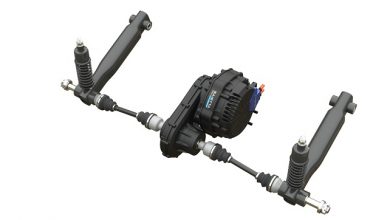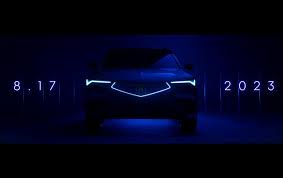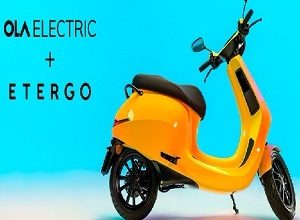India has a unique opportunity of becoming a manufacturing hub of EVs: Tarun Mehta, CEO, Ather Energy
Mr. Tarun Mehta is Co-founder & CEO of AtherEnergy, an Indian company that is building India’s first intelligent electric scooter and an electric vehicle charging network – AtherGrid.
Please read below the excerpts of discussion which Telematics Wire had with Mr Tarun Mehta on the evolving electric vehicle ecosystem in India.
How do you see the journey of Ather Energy?
Ather began in 2013 with the idea that though the market and demand for EVs in India exists, there was no product that would match this demand. We decided to build a vehicle which would be a zero compromise alternative to the existing petrol models. While the electric powertrain was a good improvement, it wasn’t enough to revolutionise the experience of riding two wheelers. Connected vehicle technology has the potential to bring a massive change in the user experience. Hence we incorporated connected vehicle technology from the design phase to deliver a truly new product experience.
Building an intelligent ecosystem starts at the drawing board. Integrating the hardware and mechanical components with software and building a data pipeline that could collect information and analyse the data. During the prototyping and validation phase, it allowed us to use objective, real world data to build the 450. And today, we are using the similar feedback from the owners of the Ather 450 to improve the product and offer over the air upgrades.
Connected vehicles allow companies to rapidly develop their existing portfolio and affect positive changes in their upcoming products. Traditionally, you would receive some data on performance and usage when you ran tests on rigs and testing applications and finally from service and maintenance.
Today, Ather is in a unique position because it has access to real time, on-road data of the entire fleet of 450s in Chennai & Bengaluru. This has allowed us to monitor the performance and usage patterns of individual riders and also offer improvements for the fleet. For example, in the past year we learnt from home charging patterns and usage reports that owners mostly charge overnight at home. So we used the data to move the charger off board and build a smaller and lighter home charger. We have been able to offer a higher quality of after sales service because we can inform owners when their vehicle is due for a service.
What are your views about the EV industry in our country?
The EV industry in India is on the cusp of rapid growth. With new products being announced almost every week, government policies and growing consumer interest, we are now looking at an irreversible change in the two wheeler landscape of the country. India is in a unique position to distinguish itself to become a market leader in manufacturing and designing of smart connected vehicles. The global markets for EVs is expanding and India has a unique opportunity of becoming a manufacturing hub of electric vehicles.
How do you view the policy scenario in the country regarding Electric Vehicles? Is the government going overboard with its EV policy?
We don’t think the recent developments in the policy arena should be seen as the government going overboard. The progressive policies are being introduced by the government with the aim to position India as the EV hub and encouraging manufacturing in the country. This will make business easier and attract the right kind of investment and talent in the country and eventually make EVs more accessible to consumers and increase their adoption. These policies have also led to several OEMs making time bound commitments on their portfolios to contribute to an electric future.
Connectivity features are being introduced in automotive, how will EV segment respond to connected vehicle?
Building intelligent connected vehicles is a natural evolution of the automobile industry, irrespective of the energy source (ICE or EV). Though, electric vehicles have an inherent advantage of being intelligent because every component is connected and has a firmware component which can be configured even beyond purchase. It offers companies an opportunity to differentiate themselves from incumbents and offer owners a better and more rewarding experience. At Ather we built the vehicle on an “intelligent”platform, so we could add to the Ather 450’s capabilties and add value to the customer as well as the company. The 43 sensors on the vehicle track all critical components and ride behavior allowing us to rapidly develop new features from our learnings. For example: Range prediction, new modes, etc. We have also been able to use the features to offer better after sales service – through on board diagnostics, predictive maintenance features and using OTA to roll out bug fixes and improvements on the vehicle.
With more than 2.2 million kms that have been ridden by the owners. The data and analysis of the vehicle performance on the road will feed into our future products and enable us to provide the best service to our customers.
There are talks about battery management using AI/ML, what are your views about this?
The Powertrain is the most critical component of an EV. It would be a natural choice to use advanced software technology to improve it and we have been doing just that on the Ather 450. AI/ML features on the battery improves the quality of the battery response, improve longevity of the pack, add more safety and security, improve serviceability, etc. The BMS on the 450 was built in-house by the team at Ather. This has allowed us to build algorithms which are fine tuned to our chemistry and application. We can constantly update the algorithms based on learnings from field data and improve customer experience. Data like effects of temperature, charging patterns, driving patterns on cell degradation and performance feedback into our product cycle allowing us to make rapid improvements.
Affordability of Li-ion battery is a major challenge for EV adoption. Do you agree?
Data shows that the lithium-ion battery prices decreased by almost 80% between 2010 and 2018. Therefore affordability will not be a major challenge in the future. We are expecting the prices to reduce further as economies of scale kick in. As the demand for li-ion batteries increases and manufacturers set up units like the Gigafactories to increase production, investments will also start flowing in. This is already in works in countries like the US. As the EV industry scales up in India we are expecting a boost in indigenous production with more local players entering the market and increased number of global companies setting up manufacturing plants in India.
For a startup venturing in infrastructure is an uphill decision making. What has been the driving force behind Ather Grid?
At Ather we want to develop the entire EV ecosystem from manufacturing and designing the vehicle to setting up the charging infrastructure. However we realised that while we manufacture the vehicles the major constraint in adoption is posed by the anxieties around range. Our charging infrastructure initiatives are aimed at removing this barrier and to be able to provide an Ather user a seamless experience. Ather Grid, our charging infrastructure caters to the entire EV ecosystem and not just Ather vehicles. We set-up the charging infrastructure before we launch in any city to build reliability and address range anxiety. We provide both public and private charging options with the aim of encouraging adoption and providing hassle free charging experience for all. We are already present in two cities- Bengaluru and Chennai and have set-up 50 charging points at 40 locations across these two cities.
Some of our other steps are:
OTA Updates:
We have released 6 OTA updates till now. Some of the recent updates are listed below:
Dashboard features:
Auto brightness : Adjust brightness based on time
Multi Route selection on navigation
Error alerts with instructions to fix them
Range related improvements:
New Eco mode that offers even better range
Realtime efficiency visualization
Vehicle enhancements:
Guide me home lights
Sound/Volume modifications for indicators, reverse & the charger fan
Users can change riding modes via scroll switch while riding
App updates:
Ride Statistics on the app




